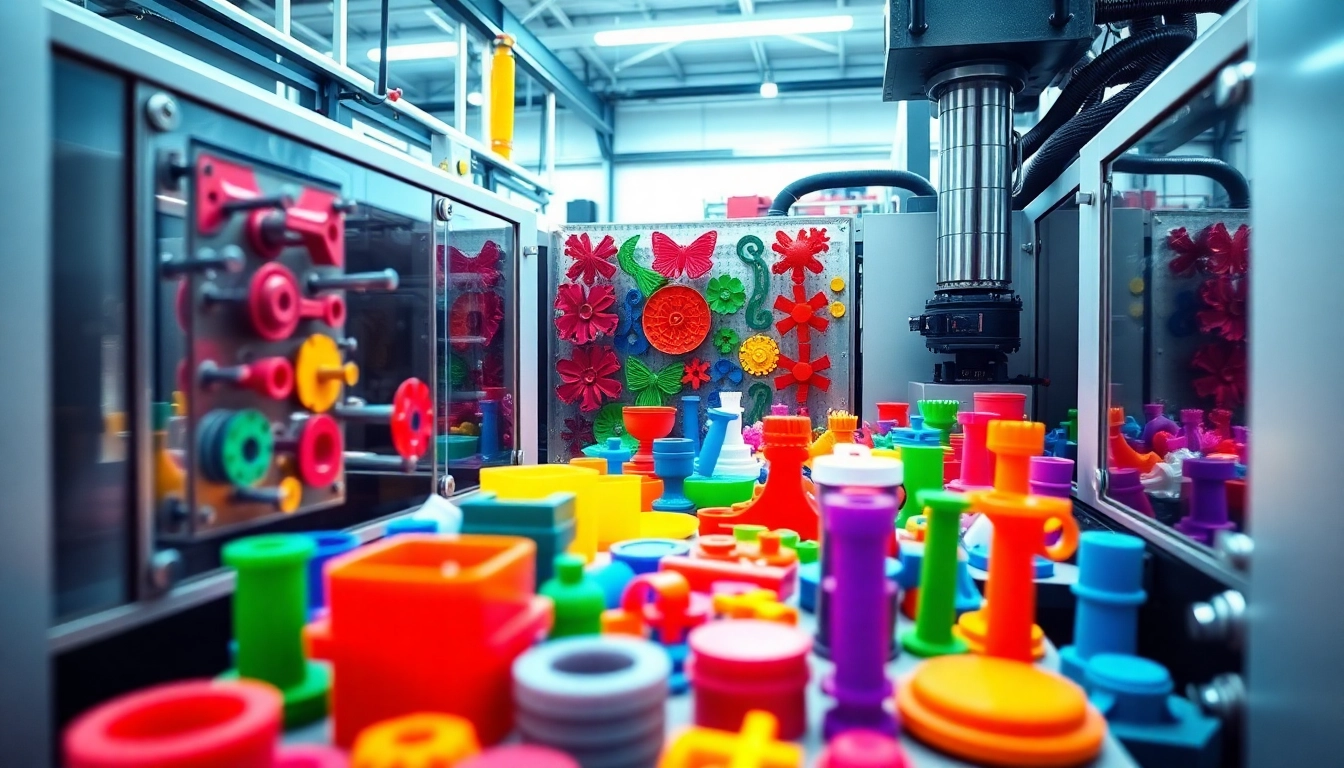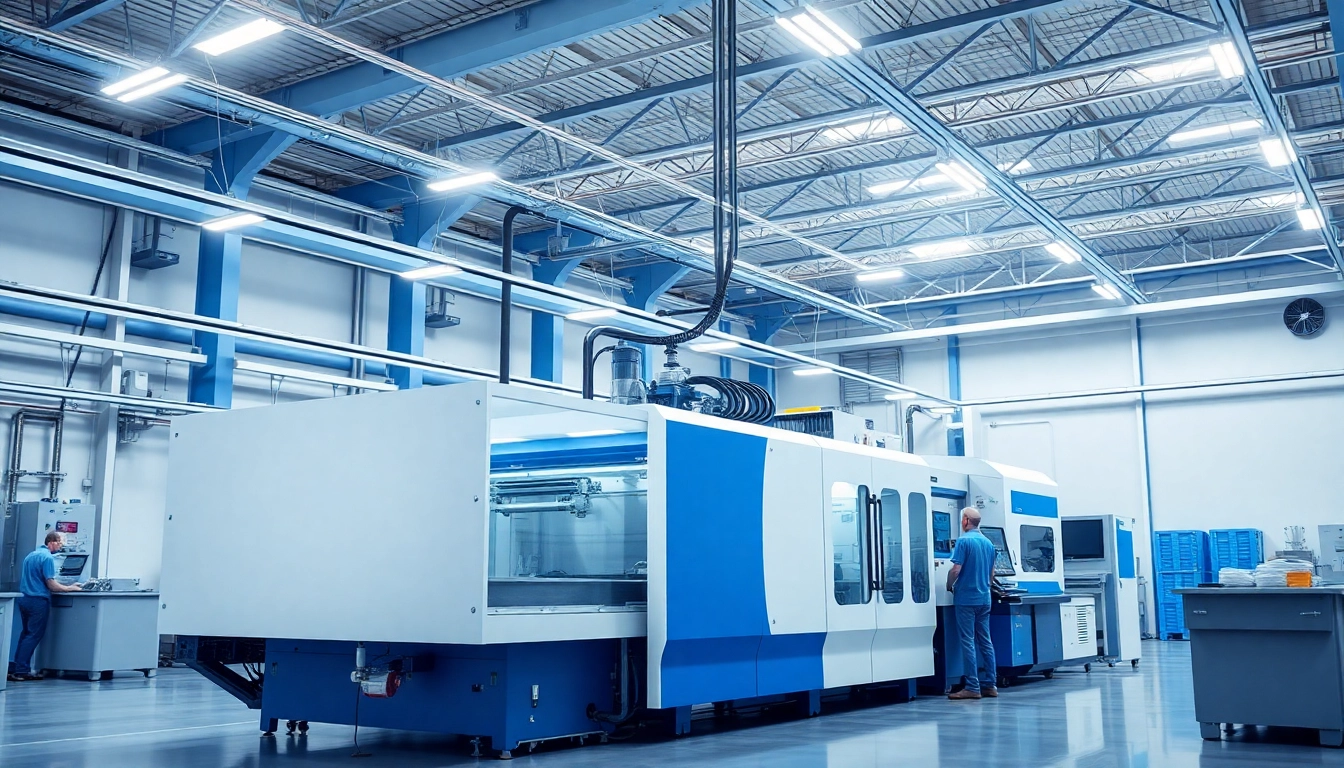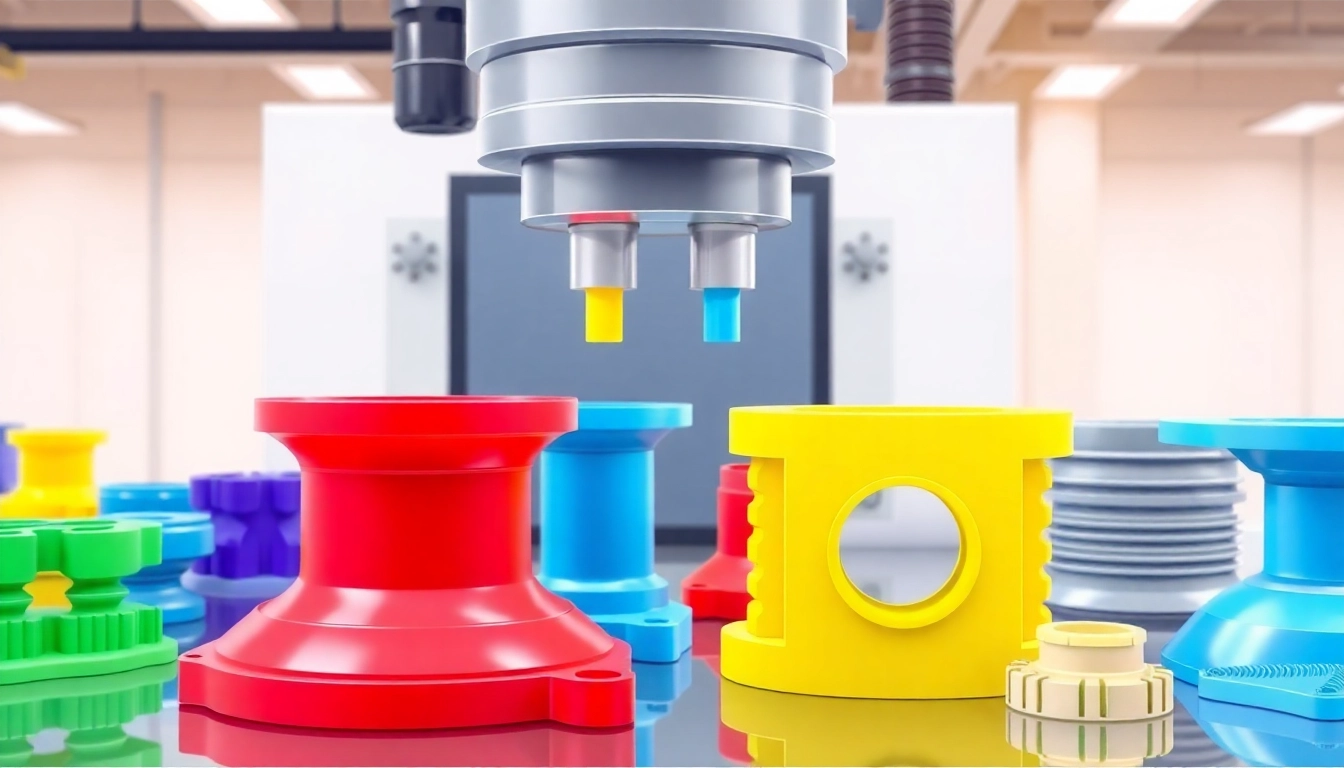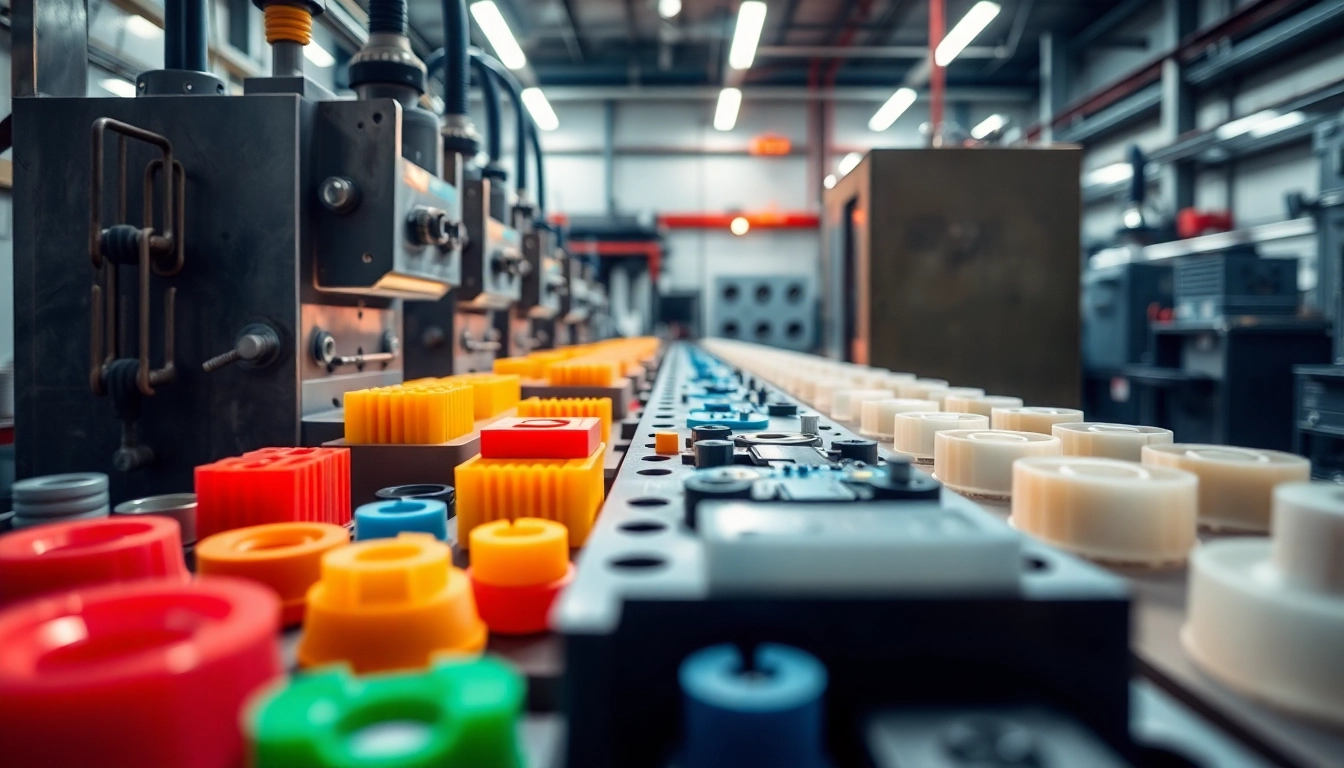Understanding Injection Molded Parts
What Are Injection Molded Parts?
Injection molded parts are components created through the injection molding process, a highly efficient and versatile manufacturing method. This technique involves injecting molten material into a specially designed mold, where it cools and solidifies to form the desired shape. Injection molding is widely recognized for its ability to produce complex shapes with precision and consistency. Typical materials used in this process include various plastics, such as polyethylene, polypropylene, and polystyrene, as well as metals and ceramics in specific applications. The advantages of using injection molded parts include rapid production rates, reduced waste, and the ability to replicate intricate designs with minimal variation. For a more in-depth perspective on injection molded parts, it’s essential to explore both the fundamental processes and the components involved.
The Science Behind Injection Molding Process
The injection molding process can be broken down into several critical stages: clamping, injection, cooling, and ejection. Initially, the mold is closed tightly by a clamping unit to prevent any leakage of material during injection. Next, plastic pellets are fed into a heated barrel where they melt, becoming a viscous liquid. The molten material is then injected into the mold cavity at high pressure, filling every detail of the mold, creating the final shape. Once the mold is filled, the material is cooled, allowing it to solidify. Finally, the mold is opened, and ejector pins push the finished part out of the mold. This cycle minimizes production time and maximizes efficiency, making it suitable for the mass production of plastic parts.
Benefits of Injection Molded Parts in Manufacturing
Injection molded parts offer numerous advantages that make them the preferred choice in various industries. Key benefits include:
- Cost-Efficiency: Although initial mold creation can be costly, the per-unit cost of parts decreases significantly with larger production runs.
- High Consistency and Quality: Injection molding ensures uniformity across parts, reducing defects and enhancing quality.
- Material Versatility: A wide array of materials can be used, accommodating different performance and aesthetic requirements.
- Complex Geometries: The process allows for intricate designs that might be challenging to achieve with other manufacturing methods.
- Waste Reduction: Excess material is minimized, as the process can be precisely controlled, leading to less wastage.
Key Components of Injection Molding Machines
Main Parts of an Injection Molding Machine
An injection molding machine comprises several key components that work synergistically to produce molded parts. Understanding these main parts is essential for grasping how the injection molding process operates:
- Injection Unit: This part melts plastic pellets and injects them into the mold.
- Clamping Unit: It holds the mold together during the injection process, preventing leaks.
- Mold: The custom-made hollow cavity where the molten material takes shape.
- Control System: Monitors and manages the entire process, ensuring all parameters are optimal for part production.
- Hopper: The container that feeds plastic pellets into the injection unit.
- Cooling System: Ensures the mold cools adequately, facilitating quicker cycle times and quality control.
The Role of Molds in Injection Molding
Molds are pivotal in the injection molding process, directly influencing the final product’s quality and conformity to specifications. A mold typically consists of two halves: the cavity and the core. The cavity forms the outer shape of the part, while the core defines the inner features. Mold design plays a fundamental role in achieving successful injection molding. Molds must not only achieve the correct shape but also accommodate issues like parting lines, draft angles, and gate locations, which facilitate efficient ejection and flow of molten material.
Understanding Mold Design and Materials
Mold design is a complex discipline that incorporates various engineering and design principles. It involves considerations such as:
- Material Selection: Molds can be fabricated from steel, aluminum, or composite materials, each offering different characteristics like durability and heat resistance.
- Design Complexity: Molds for intricate parts are often multi-part and designed to allow for easy assembly and disassembly.
- Cooling Channels: The inclusion of cooling channels within the mold helps reduce cycle time and improve product quality by ensuring even cooling.
- Surface Finish: The required finish on the molded part will influence how the mold surfaces are treated or polished.
Applications of Injection Molded Parts
Consumer Goods Created with Injection Molding
Injection molded parts are ubiquitous in consumer goods, providing solutions for an array of products that enhance everyday life. Common applications include:
- Plastic containers and packaging
- Household items such as kitchenware, toys, and furniture
- Cosmetic and personal care product packaging
- Electronics housings and components, such as computer and smartphone parts
- Automotive interior and exterior parts
Industry-Specific Uses of Molded Parts
Various industries rely heavily on injection molded parts to improve efficiency and product functionality. These industries include:
- Healthcare: Medical devices, such as syringes, surgical instruments, and diagnostic equipment housings.
- Automotive: Components for infotainment systems, dashboard features, and exterior trim.
- Aerospace: Lightweight yet strong components integral to aircraft design and functionality.
- Electronics: Enclosures for consumer electronics, telecommunications devices, and industrial machinery.
Casing Examples of Injection Molded Products
Real-world examples illustrate the diversity and functionality of injection molded products. For instance:
- Toys: Iconic brands, like LEGO, utilize injection molding to produce their intricate and durable building blocks.
- Bottles: Plastic bottles for beverages and household cleaners are commonly produced using this method, emphasizing cost efficiency.
- Car Parts: Interior trim, dashboard components, and more are manufactured to precise specifications using advanced injection molding.
Best Practices for Designing Injection Molded Parts
Design Considerations for Moldability
When designing parts for injection molding, it is crucial to adhere to best practices that enhance moldability:
Some key considerations include:
- Draft Angles: Incorporating proper draft angles in the design facilitates easier ejection from the molds.
- Wall Thickness: Uniform wall thickness minimizes warping and quality defects during cooling.
- Fillets and Radii: Designing features with rounded edges reduces stress concentrations and enhances part durability.
Common Mistakes in Part Design
Designing for injection molding can be prone to specific pitfalls that negatively impact production. Common mistakes include:
- Inadequate Draft: Not providing sufficient draft can lead to difficulty in ejecting the part from the mold, causing damage.
- Complex Shapes: Excessively complex shapes can increase costs and lead to defects during molding.
- Improper Wall Thickness: Variability in wall thickness can lead to uneven cooling and warpage.
Innovation in Injection Mold Design
Innovation continues to shape the landscape of injection molding. Techniques such as:
- Additive Manufacturing: Using 3D printing for rapid prototyping of molds can significantly reduce lead times and costs.
- Simulation Software: Advanced software enables engineers to simulate the entire injection process, identifying potential flaws before creating physical molds.
- Advanced Materials: The development of new materials, including bio-based plastics, offers eco-friendly alternatives while maintaining performance.
The Future of Injection Molding Technology
Emerging Trends in Injection Molded Parts Production
The injection molding industry is continually evolving, driven by technological advancements and changing market demands. Key trends include:
- Automation: Increased automation enhances speed and precision, reducing labor costs and improving consistency.
- Smart Manufacturing: The integration of IoT technology allows for real-time monitoring and data analytics to optimize production processes.
Sustainability and Eco-Friendly Practices
Environmentally friendly practices gain popularity in injection molding, with industries seeking sustainable solutions. Methods include:
- Recycled Materials: Utilizing recycled plastics helps reduce waste and dependency on virgin materials.
- Energy Efficient Machines: Modern injection molding machines emphasize energy efficiency, lowering operational costs and environmental impact.
Impact of Technology on Mold Manufacturing Efficiency
Technological advancements significantly influence mold manufacturing, enhancing both efficiency and reduction of lead times. Key impacts include:
- Precision Machining: Advanced machining centers allow for high-precision mold fabrication, improving quality and reducing rework.
- Rapid Prototyping: Allows designers to quickly iterate and test concepts before committing to full production molds.
- Data-Driven Decision Making: Utilizing data analytics helps manufacturers refine processes and minimize defects.



